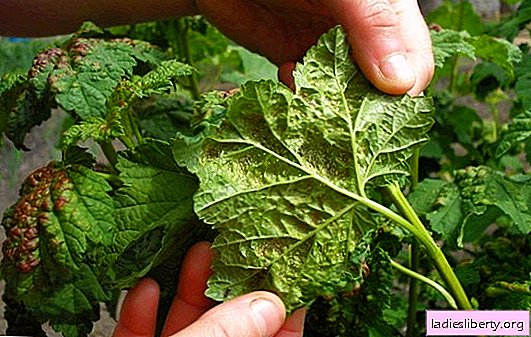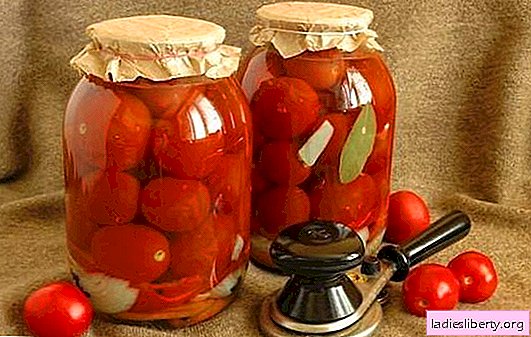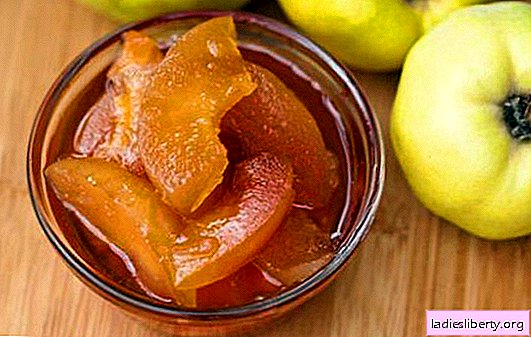
Bushes with red or blue-black berries are so familiar to the eye that most gardeners practically do not pay attention to them. But in vain, because currants, both red and black, are susceptible to diseases and pests, no less than other garden plants. Moreover, if you do not disperse the bugs, caterpillars and other harmful fraternities in time, then over time they can spread to other green inhabitants of the garden.
Pests of red and black currants: how to recognize an insect?
The most frequent guest on the currant is the spider mite. Its strings envelop leaves, stems and berries. The tick begins its activity in early spring, during the budding of buds. Consider the laid eggs of an insect that has wintered in fallen leaves or the topsoil, on the underside of the leaves. Vital activity of the spider mite significantly reduces the yield of currants and winter hardiness of any variety, the leaves turn brown and curl, after which they dry up and fall off.

The owners who manage to keep the garden and garden in absolute cleanliness, the spider mite does not take root: the first generation of this insect breeds on weeds, especially in the heat (July-August). But summer residents (especially those who come to the site only on weekends) often just do not have time for a total weed control. How to be in this case? Naturally, fight to the bitter end!
How to treat currants from these pests?
If the infection is small, then it is quite possible to do with folk remedies without resorting to store chemistry.
The fight against spider mites includes several stages:
• collection and burning of fallen and infected foliage;
• regular digging and loosening of soil under the bushes;
• when the buds open, and after flowering the currant, the bush is sprayed with the following composition: in 10 l. water diluted with 20 g of 50% malathion;
• a good folk method - spraying currants with a strong decoction of onion or garlic husk.
Large currant plantations will have to be treated with special compounds, since folk remedies may not cope with such a volume. Most often this is spraying with specialized acaricides of systemic action.
How can you treat currants from pests:
• "Antio";
• "Akartan";
• "Zolon";
• "Tedion", and other acaricides.
Chemicals should be used strictly according to the instructions, otherwise the plant will get burns. Moreover, acaricides are better to alternate, since insects can get used to one compound and develop immunity to it. Severe infection requires periodic spraying.
What you need to know about the most dangerous pests of red and black currants - kidney mites
Beginning gardeners rejoice when they see bloated buds on currants in spring, and become desperate when they do not bloom, but simply fall apart, exposing destroyed rudiments of leaves. This is the work of a kidney tick.

It is unrealistic to notice it: the size of an adult is only 0.3 mm, and it penetrates the kidneys at the stage of their formation. The female tick hibernates in the kidneys and lays eggs during their swelling. If buds of unnatural sizes are found on the bushes (the activity of the tick can inflate them to the size of a pea), deformation and discoloration of the upper leaves means that it is time to start processing the currants from pests.
1. Pouring boiled water over infected bushes is popular among gardeners.. Oddly enough, but this method strengthens the plant, increasing its immunity to powdery mildew. Cool the water a little, bind the shoots together and water the bush. The disadvantage of this method in timing: the kidney mite is activated already at + 5 ° C; therefore, a hot shower is carried out at a positive temperature, but before the buds open.
2. Manually remove infected kidneys long and ineffective, but if there are few plants, you can use this method. The procedure is carried out in autumn or winter, when there are no leaves and diseased buds are very different from healthy ones. This method has its drawback: if at least one dwelling place is missing, then labor will go down the drain: the pest will spread throughout the bush. In order not to guess how to process the currant already during fruiting, you need to do everything in a timely manner.
3. The best chemicals for the destruction of the kidney tick are lime-sulfur solution (ISO) and colloidal sulfur:
• colloidal gray currants are treated before flowering and after it. The solution is prepared from 10 g of sulfur and 1 liter of water. Most likely, this year you will not wait for the harvest, since sulfur will destroy it along with the tick, but it is better than treating currant from pests with a less effective drug and losing the crop next year;
• the ISO solution is done the same way, and the bushes are treated in the same way. The first spraying is done with a 2% composition, the second 1%; moreover, treatment is carried out both on the bush and on the ground around it.
Drugs with sulfur are good because they develop immunity to fungal diseases in currants; they should be used in strict accordance with the instructions.
4. If the tick still remains, then the gardener has only drastic measures:
• autumn pruning of the bush: all shoots are removed under the root. This will not harm the plant, rather, on the contrary, currants will rejuvenate and grow further. Disadvantage - several years may elapse before the next fruiting;
• a bush severely affected by ticks and viruses is completely destroyed.
It must be remembered that the tick can be transferred to other plants even on garden tools, therefore, after pruning or transplanting, it is advisable to scald them with boiling water.
Aphids: what you need to know about pest treatment
Currant aphid is “good” in that it is easy to spot. The activity of light green insects leads to twisting and wrinkling of apical leaves; the plant ceases to bear fruit. In one go, aphids cannot be destroyed, so processing is ongoing.

1. The simplest, most affordable and painless method is washing the affected parts with a strong soapy solution or a solution of wood ash.
2. In a bucket of water (12 l) add 3 tbsp. l urea and several crystals of potassium permanganate, until a solution of bright pink color.
3. Spraying with a solution of boric acid with the addition of any soap will destroy not only aphids, but also ants.
4. During swelling of the kidneys, the currants are sprayed with "Netrofen" to eliminate ovipositors that survived the frost.
5. During the summer, the bush is treated with insecticides (Karbofos, Wofatox, Actellik, etc.).
It is recommended to prevent the occurrence of aphids by any suitable insecticide.
Glass and fire: how to defeat them?
Just get rid of the fire. A sign of its appearance is berries on the web, which gradually dry out and fall off.

The butterfly itself has no effect on the development of the bush, since the pest is its caterpillar. The larva hibernates in the soil at the roots, so the easiest way to destroy it is any covering material or mulching. After flowering, the bushes are sprayed with any insecticide.
With glass so easy not to partI. Not one summer resident puzzled over the question: how to treat currants from these pests.

This butterfly lays eggs on the bark, and the caterpillars, hatching, penetrate the shoots and gnaw them from the inside. On the surface, a butterfly can be seen only once: in early spring, during the next egg laying. This does not add health to the currant: due to a lack of nutrients, the bush may die. It is very difficult to get rid of an insect, since the caterpillars are inside:
• during pruning, shoots affected by the vitrified glass are cut to the root and burned;
• as they grow, inspect the bush and cut branches to healthy sites;
• sprayed with Actara or another strong insecticide, with the addition of soap.
Timely top dressing, loosening and mulching make the bush stronger; pests do not live on such plants for long.
How to treat currants during fruiting if you missed the procedure in the spring
During the period of fruit ovary, no chemicals can be treated. The maximum that can be done is to cut off shoots damaged by diseases or pests. Processing is carried out twice: before and after flowering.
The article does not list all the pests of the currant bush, but they are not so common and do not cause such harm. Leaf gall midges, scale insects, blackcurrant berry sawflies are destroyed by the collection of damaged fruits and leaves, and treatment with insecticides.











